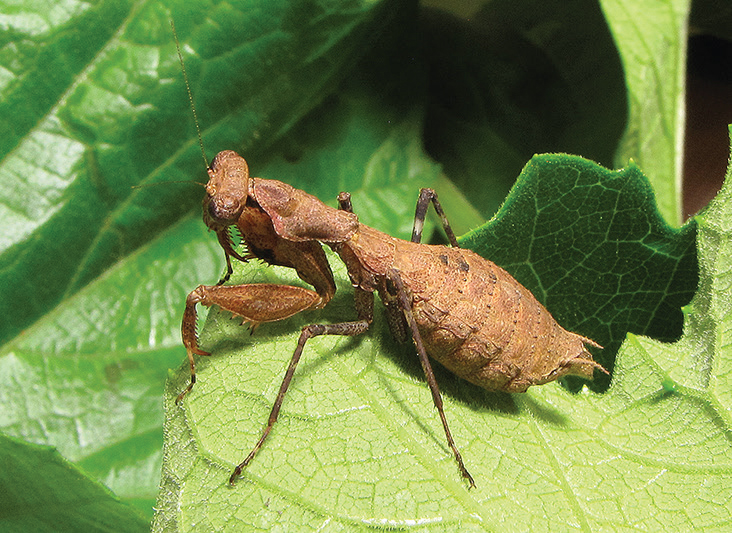'Vicious' New Praying Mantis Discovered in Rwanda

On a cool and rainy night in a dense, mountainous forest in Rwanda, insect-surveying scientists discovered a new species of praying mantis, one whose wingless females are "vicious hunters" that prowl for prey as if they were marauding tigers.
The researchers have named the newfound praying mantis species — which was discovered in Nyungwe National Park — Dystacta tigrifrutex, or "bush tiger mantis."
"The new species is amazing, because the fairly small female prowls through the underbrush searching for prey, while the male flies appear to live higher in the vegetation," stated Riley Tedrow, a Case Western Reserve University evolutionary biology student who led the research. [In Photos: Animals That Mimic Plants]
Researchers found out about the species after a winged male was attracted to a light trap the scientists had set up to study the local insects. After fortuitously trapping a female from the leaf litter, the scientists got another lucky break: She laid an egg case (called an ootheca). This allowed the scientists to study the nymphs and adults in one three-week field session, which is a rarity in insect science for one field trip.
The researchers compared the new specimens with those found in museums and described in scientific papers; the scientists also looked at various measurements of the bush tiger mantis' bodies, such as color and length. Through these analyses, the researchers concluded the species belongs to the genus Dystacta; until now, this genus had consisted of just one species, D. alticeps, which is spread all over Africa.
One feature could have provided a big help in identifying the species, the male genitalia. This, however, was missing, as ants had gobbled up these vital parts while the male dried up in the Rwandan heat, the researchers noted.
The scientists also tracked down a dozen species that were previously not known to live in Rwanda, and urged that conservation authorities place the park under protection so as not to endanger the new finds. A follow-up expedition is planned in June to gauge the size of the bush tiger's habitat.
Sign up for the Live Science daily newsletter now
Get the world’s most fascinating discoveries delivered straight to your inbox.
A study based on the research will be published in the open-access journal ZooKeys.
Follow Elizabeth Howell @howellspace. Follow Live Science @livescience, Facebook & Google+. Original article on Live Science.

Elizabeth Howell was staff reporter at Space.com between 2022 and 2024 and a regular contributor to Live Science and Space.com between 2012 and 2022. Elizabeth's reporting includes multiple exclusives with the White House, speaking several times with the International Space Station, witnessing five human spaceflight launches on two continents, flying parabolic, working inside a spacesuit, and participating in a simulated Mars mission. Her latest book, "Why Am I Taller?" (ECW Press, 2022) is co-written with astronaut Dave Williams.









